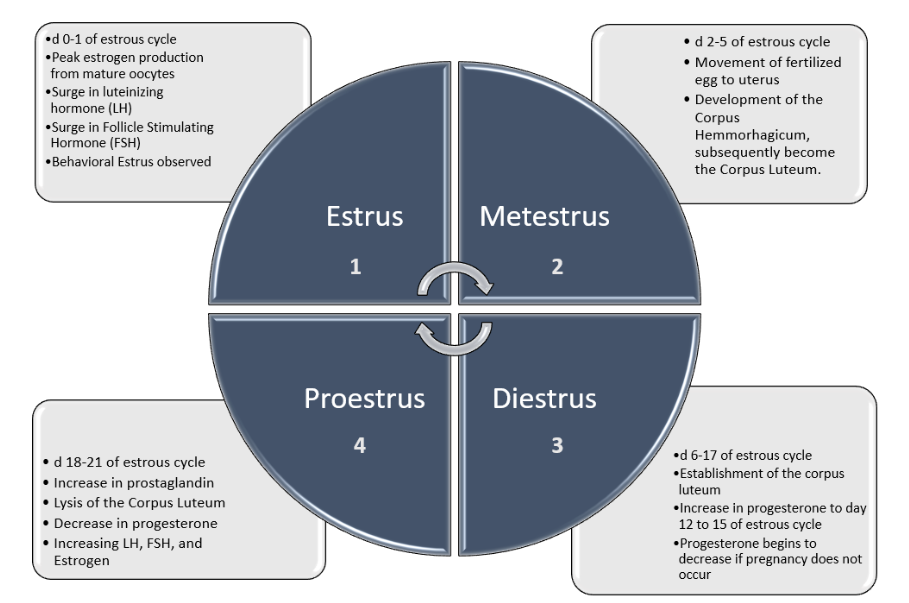Boost your herd’s productivity with top insemination tips. Are you timing it right? Discover expert advice to maximize milk yield!
Summary: Struggling with choosing the right insemination practices to maximize your herd’s reproductive efficiency? This comprehensive guide breaks down the complexities of the estrous cycle, optimal timing, and advanced detection technologies to help you make informed decisions. Dive into the debate of single versus double insemination with factual evidence and expert insights tailored specifically for dairy farmers. Discover actionable tips and strategies to boost your herd’s fertility and overall productivity.
- Efficient estrus detection is crucial for increasing reproductive efficiency and profitability in dairy herds.
- Timing of insemination significantly impacts fertilization rates; cows should be inseminated based on their estrous behavior.
- Advanced estrus detection technologies can enhance accuracy and ease of identifying optimal insemination times.
- Single mid-morning insemination often yields the best conception rates when estrus behavior is observed the same morning or previous evening.
- The debate of single versus double insemination requires consideration of your herd’s specific reproductive goals and estrus synchronization protocols.

Have you ever wondered whether your neighbors have a secret that boosts their herd’s milk production? The truth is, enhancing your insemination techniques might be the golden ticket. Ensuring you reach the sweet spot for insemination time is more than just a ‘nice-to-have’; it’s a potential game-changer that could significantly boost milk output and herd health. This post will examine why time is crucial for dairy cow insemination. We will look at the science behind optimum insemination timing, discuss practical recommendations, and provide you with all the information you need to make an educated choice. This tutorial seeks to simplify reproductive science by explaining the estrous cycle and providing concrete techniques that may be used immediately. The time of insemination substantially influences pregnancy rates, milk supply, and overall herd productivity. Mastering this feature may result in more efficient operations and healthier livestock. So, are you prepared to transform your ‘good enough’ herd into a well-oiled, high-yielding milk-producing machine? Let us get started.
Navigating the Estrous Cycle for Maximum Herd Efficiency
Understanding the estrous cycle in dairy cattle is important; it’s essential for effective herd management and insemination tactics. The estrous cycle typically lasts around 21 days, but it may vary from 18 to 24 days (University of Wisconsin-Madison, Estrous Cycle in Dairy Cattle). This knowledge will make you a more informed and knowledgeable dairy farmer, better equipped to manage your herd’s reproductive health.

The cycle can be divided into four primary phases:
- Proestrus: This phase lasts approximately 3 to 4 days. During proestrus, ovary follicles develop, leading to increased estrogen levels. Dairy cattle might exhibit behavioral and physical changes, including increased activity and vocalization.
- Estrus: Also known as “heat,” this phase is crucial for breeding and lasts about 12 to 18 hours. Cows in estrus are receptive to mating and may show overt signs such as standing to be mounted restlessness or clear mucus discharge from the vulva (Stevenson et al., 2006).
- Metestrus: Following estrus, metestrus lasts around 3 to 5 days. During this period, the corpus luteum starts to develop, and progesterone levels rise, leading to the cessation of estrus behaviors.
- Diestrus: This phase lasts about 12 to 15 days. It is characterized by high progesterone levels, which prepare the uterus for a possible pregnancy. If the cow is not pregnant, the cycle will reset as prostaglandin F2α causes luteolysis of the corpus luteum, marking the beginning of proestrus again.
Recognizing indications of estrus is crucial for timely insemination. Several studies have shown that monitoring changes such as mounting behavior and mucus discharge can significantly enhance insemination success rates (Moreira et al., 2001; Vasconcelos et al., 1999).
Finally, knowing and adequately monitoring the estrous cycle may lead to better herd fertility management and shorter calving intervals, which are crucial for a dairy operation’s economic survival. This knowledge empowers you to take control of your herd’s reproductive health and manage it more effectively, ensuring a more profitable dairy operation.
Timing is Everything!
Research shows that optimal insemination time is crucial for increasing conception rates in dairy cows. A study from the Journal of Dairy Science found that inseminating cows 12-24 hours following the beginning of estrus leads to the most excellent conception rates. This conclusion is consistent with previous research, such as Moreira et al. (2001), which recommends insemination within this window to attain peak fertility.
| Estrus Sign | Optimal Insemination Time | Notes |
|---|---|---|
| First observed standing heat | 6-12 hours later | Higher conception rates are noted when insemination occurs within this window. |
| Clear mucus discharge | 24-32 hours later | Mucus discharge is a reliable indicator of estrus onset. |
| Reduced feed intake | 20-28 hours later | Behavioral changes such as reduced intake can signal the onset of estrus. |
Furthermore, Vasconcelos et al. (1999) found that insemination more than 24 hours after the commencement of estrus dramatically reduces conception rates. This critical window capitalizes on the peak reproductive time by ensuring sperm presence corresponds with ovulation. Adhering to this time improves herd fertility, resulting in higher reproductive success and increased milk supply.
Furthermore, Stevenson et al. (2006) emphasize the need for proper estrus monitoring. Their results show that estrus detection paired with timely insemination increases the likelihood of pregnancy. New technology, such as electronic monitoring devices, may help identify the start of estrus more accurately, allowing for timely insemination.

Integrating insemination procedures with evidence-based research is beneficial and crucial for improving conception rates, herd productivity, and profitability. Leveraging this information can help dairy farmers manage their herds more effectively and efficiently.
Unlocking the Power of Advanced Estrus Detection Technologies
Introducing cutting-edge methods for detecting estrus has significantly advanced modern dairy production. Activity monitors and progesterone tests are at the vanguard of this change, ushering in a new era of reproductive care. These new instruments improve the detection process and the accuracy of insemination time, boosting the chances of a successful pregnancy.
- Activity Monitors: These gadgets, often worn as collars or anklets, continually monitor cow movement and activity levels. The Journal of Dairy Science reports that increased activity among dairy cows is a reliable predictor of estrus. Farmers may use these activity patterns to pinpoint the best times for insemination accurately. This real-time monitoring system eliminates dependence on eye observations, typically subject to human mistakes, enhancing herd management efficiency.
- Progesterone tests are another effective weapon in a dairy farmer’s armory. This test analyzes the amount of progesterone in a cow’s milk or blood, giving immediate information on her reproductive state. Low progesterone levels usually herald the start of estrus. Numerous research published in the Journal of Dairy Science has shown that progesterone testing may significantly improve the time of insemination. The accuracy provided by this biochemical method guarantees that cows are inseminated at the most fertile part of their estrous cycle, increasing pregnancy rates.
Integrating these modern tools into your herd management procedures allows you to optimize insemination time and increase overall reproductive performance. The combination of activity monitors and progesterone testing considerably reduces guessing in estrus identification, resulting in more excellent conception rates and, eventually, a more profitable dairy enterprise.
Single vs. Double Insemination: Which option best suits your herd’s reproductive goals?
Dairy producers often consider whether to use single or double insemination techniques. Let’s examine the benefits and drawbacks of each strategy so you can make an educated choice for your herd.
- Single Insemination: One significant advantage of single insemination is its simplicity, requiring less effort and resources. Farmers may also prevent the stress and pain that extra handling may give their cows. However, imagine that the time of AI (Artificial Insemination) is not entirely synced with ovulation. This approach may miss some conception chances, decreasing overall rates, especially in herds with varied estrous cycles. Timed AI methods may achieve acceptable conception rates, but proper timing is critical for improving reproductive efficiency. Failure to do so may result in lost breeding chances and worse fertility results. (Resource Link).
- Double Insemination: Double insemination has the potential for increased conception rates. Research by the University of Florida discovered that multiple insemination may increase conception rates by up to 10%. This may be especially useful in herds when estrous diagnosis is difficult, giving a safety net to ensure cows are bred at the best time. While double insemination requires extra resources and work, the benefits of improved reproductive success may exceed the costs. For herds with substantial variability in estrus observation, the benefits of multiple insemination may outweigh the costs.
Understanding the balance between efficacy and practicality is critical when deciding whether to inseminate once or twice daily. The American Dairy Science Association acknowledges that AI’s timing and frequency significantly impact conception rates and subsequent milk output.
| Aspect | Single Insemination | Double Insemination |
|---|---|---|
| Cost | Lower initial cost as only one AI procedure is required (source). | Additional AI procedures result in higher costs, but the potential for increased conception rates offsets this (source). |
| Labor intensity | Less labor-intensive with only one AI procedure. Ideal for farmers with limited time (source). | It is more labor-intensive as it requires precise timing and additional handling. |
| Conception Rate | Conception rates can vary but are generally lower compared to double insemination. | Studies show a 10% increase in conception rates compared to single insemination (source). |
| Animal Stress | Reduced stress on the animal due to fewer handling and procedures. | Increased stress due to multiple handling sessions in a short period. |
| Monitoring and Detection | It requires efficient heat detection to optimize timing and is usually more straightforward. | Advanced heat detection techniques and technologies are required to ensure optimal timing (source). |
According to research, although once-daily insemination may have slightly lower accuracy timing than twice-daily techniques, it maintains optimal conception rates with appropriate estrus detection procedures. It enables farmers to concentrate on other herd management tasks, lowering operating stress.
Twice-daily insemination may improve conception rates by bringing them closer to the ideal fertilization window. This is especially useful in more enormous herds when individual estrus symptoms might be readily ignored. However, higher frequencies raise labor and material expenses.
Successful conception has a favorable correlation with milk production. Cows that conceive at ideal timeframes have higher milk output since more extended open periods may contribute to protracted lactation curves and metabolic stress. Poorly timed insemination may increase open periods, reducing milk supply and herd health.
The decision between once or twice daily insemination is based on your farm’s demands, resources, and the efficacy of estrus detection techniques. While twice-daily insemination may increase conception rates, it is more labor-intensive and costly. Once-daily insemination is simple but needs exact estrus detection. Balancing these parameters may result in greater reproductive success, herd health, and milk output.
The Bottom Line
Determining the best insemination procedures for your herd requires a detailed grasp of estrous timing and the use of technical breakthroughs. Accurate estrus identification and current techniques dramatically improve reproductive success, whether using single or double insemination. Integrated tactics combining precise timing, improved detecting technology, and targeted insemination procedures are critical for increasing production. Improving reproductive methods is crucial for long-term, successful dairy farming, contributing to the evolution of industry best practices. Adopting sophisticated approaches and constantly fine-tuning your approach is essential for overcoming challenges—stay aware and adaptive with proactive measures and embrace the path to optimum herd fertility.













